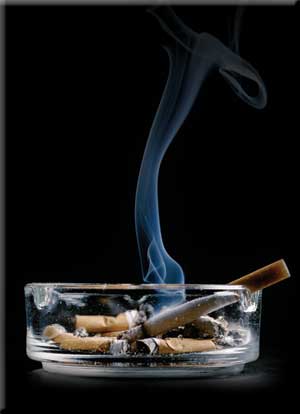The flammability of approved cigarettes is of great importance to insurers as significant property damage occurs each year from carelessly discarded smoking materials. According to NFPA’s 2008 article U.S Smoking-Material Fire Problem, in 2006 over $606 million dollars of property damage occurred due to smoking materials. In order to try and reduce the number of fires related to cigarettes, most states require that cigarettes meet the testing procedures outlined in the American Society for Testing and Materials (ASTM) International’s E2187, Standard Test Method for Measuring the Ignition Strength of Cigarettes. Cigarettes that comply with this testing standard are supposedly safer — less likely to cause a fire than cigarettes that do not comply with this standard. The hope was that ASTM E2187 compliant cigarettes would self-extinguish thereby reducing the number of smoking material related fires.
 Unfortunately, recent ignition tests by Fire Findings shows little to no difference between ASTM E2187 approved cigarettes and traditional, non-ASTM E2187 cigarettes. See, Fire Findings, Vol.18, No.1 (Winter 2010). Fire Findings tested the propensity for ASTM E2187 cigarettes to ignite trash, dry potting soil and peat moss, and gasoline. The results of these tests were similar to the results of their previous tests of traditional cigarettes. Fire Findings concluded that both types of cigarettes, ASTM E2187 approved and non-approved, can ignite similar materials in real world situations. The next time your get a fire loss involving a cigarette, don’t be so quick to discard it simply because the cigarette met the ASTM E2187 standard.
Unfortunately, recent ignition tests by Fire Findings shows little to no difference between ASTM E2187 approved cigarettes and traditional, non-ASTM E2187 cigarettes. See, Fire Findings, Vol.18, No.1 (Winter 2010). Fire Findings tested the propensity for ASTM E2187 cigarettes to ignite trash, dry potting soil and peat moss, and gasoline. The results of these tests were similar to the results of their previous tests of traditional cigarettes. Fire Findings concluded that both types of cigarettes, ASTM E2187 approved and non-approved, can ignite similar materials in real world situations. The next time your get a fire loss involving a cigarette, don’t be so quick to discard it simply because the cigarette met the ASTM E2187 standard.



